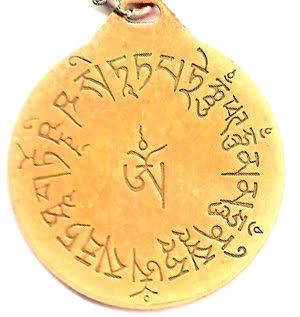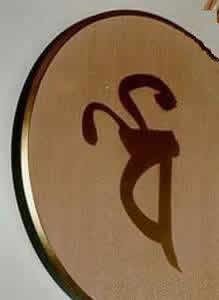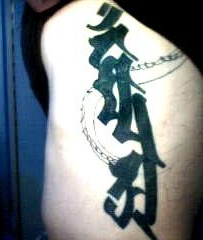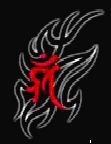Mystery Amulet
 Nigel sent in this image of his amulet and asked about the mantra on it. The mantra is in the Tibetan Uchen (dbu-can) script. In the centre is the seed-syllable (bījākṣara) oṃ. The mantra starts at 6 c'clock and goes clockwise. It reads
Nigel sent in this image of his amulet and asked about the mantra on it. The mantra is in the Tibetan Uchen (dbu-can) script. In the centre is the seed-syllable (bījākṣara) oṃ. The mantra starts at 6 c'clock and goes clockwise. It readsoṃ sarvatathāgatoṣṇīṣasitātapatre hūṃ phaṭ hūṃ mama hūṃ ni svāhāIf we break the sandhi and add dashes for compounds it reads:
oṃ sarva-tathāgataḥ
uṣṇīṣa-sita-ātapatre hūṃ phaṭ hūṃ mama hūṃ ni svāhā
So now it becomes clear that this is a mantra for Uṣṇīṣa-sitātapatra (also spelt Uṣṇīṣa-sitātapattra) a Tantric goddess with 1000 heads, 1000 arms, and 1000 legs! Her name means something like 'crowned with a white parasol'. Her iconography is very complex, though apart from her multiple limbs she does carry a white (sita) umbrella/parasol (ātapatra) or sometimes a Tibetan victory banner. Robert Thurman tells us that she is a special form of Tārā and a counter part to the 100o armed form of Avalokiteśvara (The Sacred Art of Tibet p.319-321).
Here's the mantra written out in dbu-can.

Try here for an image of Uṣṇīṣa-sitātapatra.
Nigel made a generous donation for receiving this information - thanks again!
Labels: Queries

 Doug wrote recently to ask about the association of the bīja
Doug wrote recently to ask about the association of the bīja 






